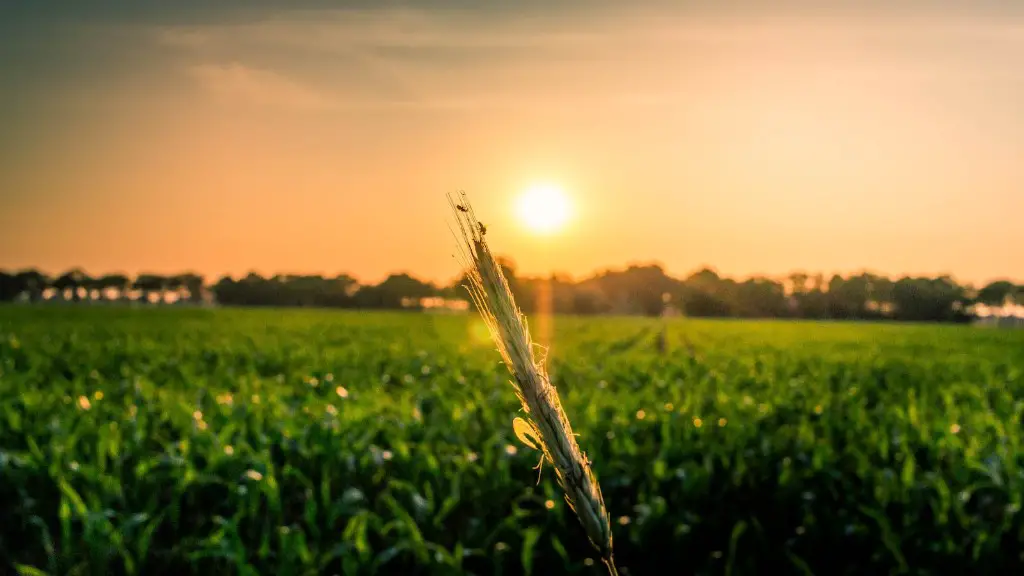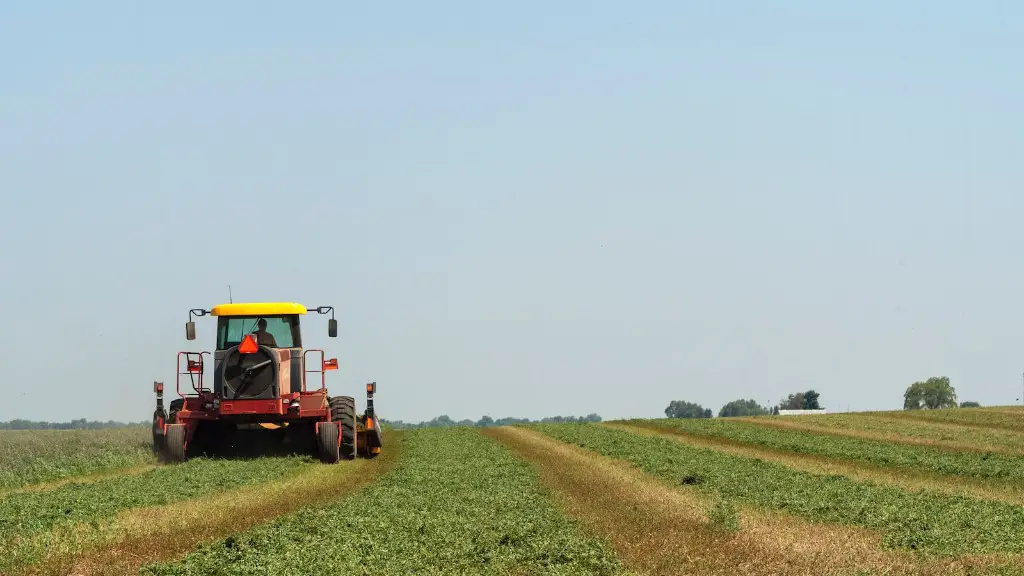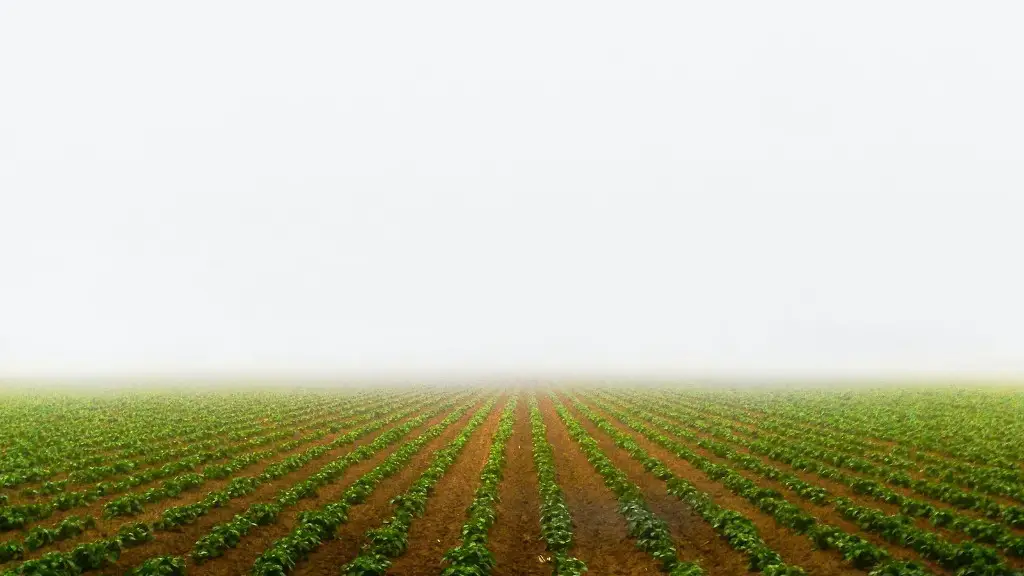In order to have a successful agricultural season, it is important to start with preparing the soil. This means ensuring that the correct nutrients are present, the pH is balanced, and that the soil is the right texture for the crop you want to grow.\
There are a few key steps to properly preparing your soil. First, you need to test the soil to identify any nutrient deficiencies. This can be done with a simple soil test kit from your local garden store. Once you know what nutrients need to be added, you can amend the soil accordingly.
Next, you need to make sure the pH of the soil is between 6.0 and 7.0. This is the ideal range for most crops. If the pH is too low, you can add lime to raise it. If the pH is too high, you can add sulfur to lower it.
Finally, the soil texture needs to be just right. The ideal texture is a mix of sand, silt, and clay. This provides the perfect balance of drainage and nutrients for plants. If your soil is too sandy, you can add organic matter to help hold moisture and nutrients. If your soil is too clay-like, you can add sand to improve drainage.
By
“How to prepare soil for agriculture?”
1. Test your soil to find out its pH level. You can purchase a soil testing kit from a garden center or nursery.
2. If your soil is too acidic or alkaline, you can adjust its pH level by adding lime or sulfur.
3. Add organic matter to your soil to improve its structure. Compost, manure, and peat moss are all good options.
4. Till or dig your soil to a depth of 8-10 inches. This will help to loosen compacted soil and allow roots to penetrate more easily.
5. Rake the soil smooth and level it off before planting.
How can you prepare a good soil for agriculture?
Soil preparation is an important step in agriculture. It helps to improve the aeration in the soil, which is important for the roots of plants to penetrate the soil easily. Ploughing, levelling, and manuring are the three steps of soil preparation. Ploughing includes loosening and digging of soil. This helps to improve the aeration in the soil. Levelling helps to create a level surface for planting. Manuring helps to add nutrients to the soil.
Compost is a great way to improve the quality of your soil, especially if it is sandy or clay. By adding a layer of compost to your soil, you will help it to hold more moisture and nutrients, and make it more lightweight and better drained. Compost also adds trace nutrients that are needed by plants, so it is a good idea to work it into the soil at least a month before planting.
What are the important steps in the preparation of soil
Soil preparation is a vital step in ensuring a successful crop yield. The three steps involved in soil preparation are: ploughing, leveling, and manuring. Each of these steps is essential in creating a hospitable environment for crops to grow. Ploughing breaks up the soil, making it easier for roots to penetrate and access essential nutrients. Leveling ensures that the soil is even, making it easier for water to evenly distribute throughout. Manuring adds essential nutrients to the soil, ensuring that the crops have everything they need to grow strong and healthy.
Preparation of land for construction or farming generally includes the steps of clearing and weeding the field, pre-irrigation, first ploughing or tilling, harrowing, flooding, and levelling. Depending on the type of project, the order and specific steps may vary slightly. For example, if the land is being prepared for a garden, the order might be: clearing and weeding, tilling, levelling, and then adding compost or other amendments.
How do you make poor soil good?
1. Add compost to your garden soil. Compost is decomposed organic matter, and it is the best thing you can use to improve the health of garden soil.
2. Get a soil test. This will help you determine what nutrients your soil is lacking, so you can add the appropriate amendments.
3. Mulch the soil surface. This will help keep the soil moist and prevent weeds from germinating.
4. Prevent soil compaction. This can be done by avoiding walking on wet soil, and by using raised beds or containers for your plants.
5. Rotate crops each year. This helps to prevent disease and pests from becoming established in your garden.
6. Grow cover crops. Cover crops can help improve soil structure and increase nutrient levels.
7. Add aged animal manure. This is an excellent source of nutrients for garden soil.
Organic matter is essential for healthy soil. It helps to improve soil structure, increase water retention, and improve drainage. It also provides a source of nutrients for plants. Adding compost and aged manure to your soil is the best way to prepare it for planting. Chemical fertilizers will only replenish certain nutrients and will not improve soil health.
Can you put new soil on top of old soil?
If the level of soil in your planter or raised bed has dropped, you can add fresh planting mix (also known as potting mix) to top it off. Ideally, the soil should come to within an inch or so of the rim of the planter or raised bed. Use a fork or hand tool to blend the new soil into the old soil.
Organic matter is essential for healthy plant growth. It helps improve soil structure, aeration and drainage. It also increases soil fertility and helps suppress plant diseases and pests.
Adding organic matter to your garden will ensure that your plants have access to the nutrients they need to thrive. There are a variety of organic fertilisers available, including home-made garden compost, bagged compost or well-rotted manure. As a rule, add a minimum 5cm layer of organic matter over the surface before digging or forking it in. These organic fertilisers are more beneficial to soil bacteria than inorganic compounds.
How do you clean soil before planting
Microwaving soil is an effective way to heat it up quickly. By placing moist soil in a zip-top bag and microwaving it on high, the middle of the soil can reach temperatures between 180 and 200 degrees Fahrenheit. This is hot enough to kill many weed seeds and bacteria.
1. Clear the area of any plants, weeds, and debris, including roots, stones, and rubbish.
2. Wait for the soil to dry out completely.
3. Spread a layer of green manure over the soil.
4. Break up any lumps in the soil.
5. Add nutrients to the soil.
6. Add water.
What are the 4 stages of land preparation?
There are basic steps to follow to prepare the land for planting rice. Plowing the cracks helps recycle plant nutrients and allow decomposition. Flattening the ground helps manage water.
Preparation of the soil involves loosening and turning the soil. This process is known as ploughing, is done by using a wooden or iron plough which pulls the soil. The pulled soil is then levelled by using a wooden or iron leveller.
What is the first step in preparing a farmland
Land preparation is a critical step in getting your field ready for planting. It typically involves (1) plowing to “till” or dig-up, mix, and overturn the soil; (2) harrowing to break the soil clods into smaller mass and incorporate plant residue, and (3) leveling the field. Initial land preparation begins after your last harvest or during fallow period.
Preparing your land properly will help ensure a good yield come harvest time. Make sure to give yourself enough time to get the job done right.
When you are ready to start building on your lot, there are certain preparations you should take to ensure a smooth construction process. First, you should have the land surveyed and evaluated to get an accurate idea of its size and features. Next, you should do some rough grading and excavation to level the land and prepare it for construction. Once the land is ready, you can start the site design and select the location for your building. Finally, you should clear the land of debris and check the land’s accessibility and utility to make sure everything is in order before starting construction.
What are the steps to farming a field?
If you want to be a successful farmer, you need to follow some key steps. First, you need to compost. This will help your plants grow healthy and strong. Next, you need to add amendments to your soil. This will help your plants get the nutrients they need. Then, you need to plant your crops. Be sure to water them regularly and weed them often. Finally, harvest your crops and deliver them to your customers. By following these steps, you will be on your way to success!
If your soil mix is unhealthy, it can cause a number of problems for your plants, grass, and flowers. Here are three signs to watch out for:
1. Lack of moisture. Unhealthy soil doesn’t have the moisture and nutrients needed to thrive, which makes it dry, crumbling, and cracked.
2. Poor growth. The successful growth of grass, plants, and flowers starts with the soil mix. If the mix is unhealthy, the plants will likely suffer as a result.
3. Compacted soil. When soil is compacted, it doesn’t have the room it needs to breathe. This can suffocate plants and lead to other problems.
Conclusion
To prepare soil for agriculture, the first step is to test the soil to find out what nutrients it is lacking. fertilizers can then be added to the soil to correct the nutrient imbalance. The next step is to plow or till the soil to loosen it and make it easier for plants to grow in it. Finally, the soil should be raked smooth to create a uniform seed bed.
The best way to prepare soil for agriculture is to till it. Tilling breaks up the soil and allows for better drainage and aeration. It also helps to control weeds and break up large clumps of dirt.





